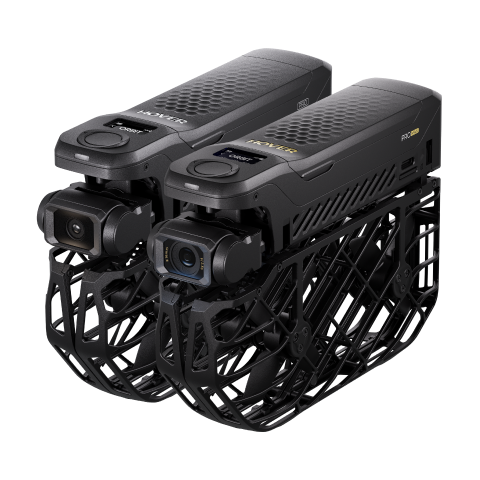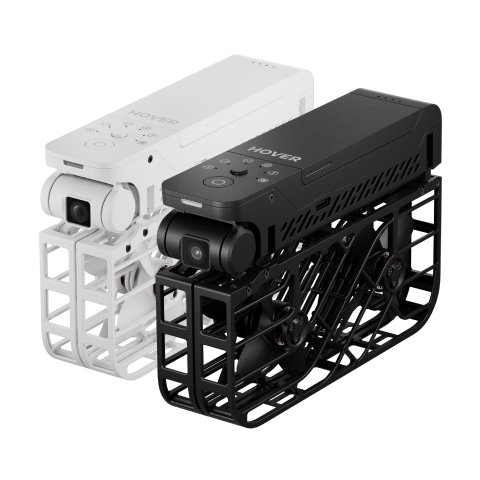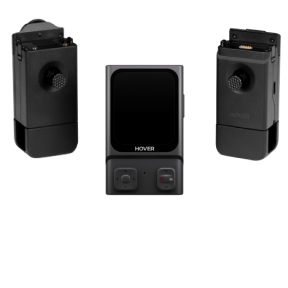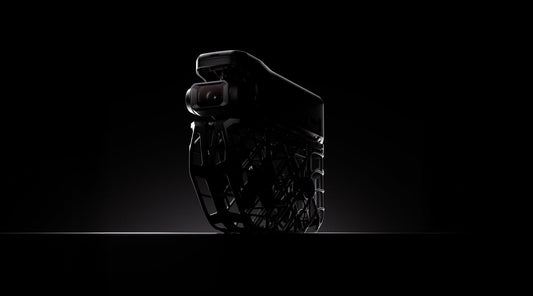Unveiling the Core Technologies Behind the World’s First 8K Pocket-Sized Flying Camera
Industry Innovation — The First 8K Flying Camera
The HOVERAir X1 PROMAX marks a groundbreaking milestone in the drone industry as the first-ever 8K flying camera.
Capturing 8K ultra-high-definition video in such a compact, palm-sized aircraft is an incredible engineering feat.
In today’s market, even professional drones often struggle to achieve 8K recording due to limitations in sensor capability, processing power, and thermal management. For a pocket-sized drone like the X1 PROMAX to deliver stable, long-duration 8K footage, it must overcome several major barriers in optics, computing, and design.
So why is 8K so challenging? Let’s break down the key technical hurdles that make it one of the most demanding frontiers in aerial imaging.
The Challenges of 8K: Beyond Pixel Count
8K recording isn’t just about increasing resolution — it’s a complete system challenge. Every component, from the lens to the processor to the heat sink, must be precisely engineered to handle the extreme demands of 8K.
📊 Massive Data Throughput
8K resolution equals 7680 × 4320 pixels. At 30 frames per second, that’s over one billion pixels per second — demanding immense bandwidth for real-time reading, processing, and encoding.
⚙️ Extreme Processing Power
Real-time 8K video requires a powerful SoC with a high-performance Image Signal Processor (ISP) and AI engine capable of handling massive data with minimal latency.
🔥 Power & Heat Constraints
More power means more heat. In a sub-200g drone, maintaining performance under such thermal pressure requires innovative cooling solutions.
🤖 Multi-Tasking Load
An 8K flying camera must not only record ultra-high-definition video, but also control flight, track subjects, and execute AI algorithms simultaneously — all without system lag. This is why 8K has long been reserved for large, professional-grade equipment — until now.
Engineering Breakthroughs: How HOVERAir X1 PROMAX Achieves 8K
🚀 Next-Generation Qualcomm octa-core Flagship SoC
At the heart of PROMAX lies a next-generation Qualcomm flagship SoC, equipped with a robust CPU, GPU, ISP, and AI engine.
Unlike the dual-core or quad-core chips commonly found in drones, HOVERAir PROMAX adopts an advanced octa-core architecture designed to deliver exceptional computing power and efficiency. This powerful platform not only supports real-time 8K video processing, but also handles intelligent tracking, path flight, and other complex tasks simultaneously — ensuring smooth, intelligent, and reliable operation in every scenario.

🔭 Advanced 1G+6P Optical Lens System
PROMAX features a 1G+6P hybrid optical structure (1 glass + 6 precision plastic elements), designed for exceptional image quality:
- High resolving power: Sharp, detailed imagery from center to edge.
- Thermal stability: Consistent clarity even during long recording sessions.
- Wide 107° field of view with minimal distortion.
This professional-grade optical system forms the cornerstone of PROMAX’s 8K imaging capabilities.

⚡ High-Speed Memory & Transmission
To keep up with 8K’s enormous data flow, PROMAX uses LPDDR5 high-speed memory, delivering outstanding bandwidth and responsiveness. With Wi-Fi 6 support, users can quickly download footage at speeds of up to 100MB/S and share wirelessly — no more “record but can’t transfer” frustration.
❄️ Micro Active Cooling System
ProMax’s engineering team developed a miniaturized active cooling system to sustain high performance in a palm-sized frame:
- Dual airflow channels (front and side) create efficient internal ventilation.
- Precision micro fan actively pulls heat away from the core.
- Thermal fins and conductive structure ensure rapid heat dissipation.
This professional-grade thermal design — once exclusive to laptops and cinema cameras — is now seamlessly integrated into a compact flying camera.

Comparative Overview
| Feature | HOVERAir X1 PROMAX | Typical Drones / Action Cameras |
| Processing Platform | Qualcomm octa-core SoC with high-performance GPU | Dual-core / quad-core CPUs, limited computing power |
| Lens Capability | 1G+6P optical structure, high-resolution across frame | Simple lens assemblies, lower edge-to-center clarity |
| Cooling System | Internal airflow channels + micro-precision fan + heat fins | Limited cooling, 8K recording can overheat quickly |
| Continuous 8K Recording | Supports long-duration stable recording | Usually only short bursts, requires cooling breaks |
| Body Size / Portability | Palm-sized, highly portable | Often larger and less convenient to carry |
More Than 8K: Intelligent System-Level Optimization
PROMAX isn’t just about capturing 8K — it’s about doing so while staying smart and stable.
- AI Smart Tracking: Real-time subject detection and precise following.
- Intelligent Flight Paths: Executes complex flight routes without compromising processing power.
- Multi-Task Parallelism: Video, control, and AI run concurrently, without interference.
This level of system coordination showcases HOVERAir’s deep integration expertise and software-hardware synergy.
User Benefits: Clarity, Creativity, and Control
🎬 Creative Freedom
8K footage offers immense flexibility in post-production — crop, stabilize, or reframe while still maintaining 4K output quality.
🧳 Portability Meets Professionalism
Capture cinematic-quality content without bulky gear. PROMAX brings pro-level imaging to your pocket.
🚀 Future-Proof Performance
8K is the next frontier in imaging. PROMAX ensures you’re already there, ready for the future of content creation.
A Symbol of System Integration Excellence
HOVERAir X1 PROMAX is not just an incremental upgrade — it’s a complete re-engineering of imaging, computing, thermal, and transmission systems into one compact platform. It represents the evolution from a pocket drone to a professional imaging platform, where every subsystem is optimized to work in harmony.
8K is not just about resolution — it’s about redefining what’s possible in a palm-sized flying camera.















